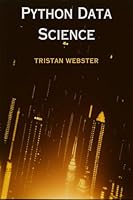
Spatial Microsimulation with R
- Length: 282 pages
- Edition: 1
- Language: English
- Publisher: Chapman and Hall/CRC
- Publication Date: 2016-03-21
- ISBN-10: 1498711545
- ISBN-13: 9781498711548
- Sales Rank: #2503048 (See Top 100 Books)
Generate and Analyze Multi-Level Data
Spatial microsimulation involves the generation, analysis, and modeling of individual-level data allocated to geographical zones. Spatial Microsimulation with R is the first practical book to illustrate this approach in a modern statistical programming language.
Get Insight into Complex Behaviors
The book progresses from the principles underlying population synthesis toward more complex issues such as household allocation and using the results of spatial microsimulation for agent-based modeling. This equips you with the skills needed to apply the techniques to real-world situations. The book demonstrates methods for population synthesis by combining individual and geographically aggregated datasets using the recent R packages ipfp and mipfp. This approach represents the “best of both worlds” in terms of spatial resolution and person-level detail, overcoming issues of data confidentiality and reproducibility.
Implement the Methods on Your Own Data
Full of reproducible examples using code and data, the book is suitable for students and applied researchers in health, economics, transport, geography, and other fields that require individual-level data allocated to small geographic zones. By explaining how to use tools for modeling phenomena that vary over space, the book enhances your knowledge of complex systems and empowers you to provide evidence-based policy guidance.
Table of Contents
Part I: Introducing spatial microsimulation with R
Chapter 1: Introduction
Chapter 2: SimpleWorld: A worked example of spatial microsimulation
Chapter 3: What is spatial microsimulation?
Part II: Generating spatial microdata
Chapter 4: Data preparation
Chapter 5: Population synthesis
Chapter 6: Alternative approaches to population synthesis
Chapter 7: Spatial microsimulation in the wild
Chapter 8: Model checking and evaluation
Chapter 9: Population synthesis without microdata
Chapter 10: Household allocation
Part III: Modelling spatial microdata
Chapter 11: The TRESIS approach to spatial microsimulation
Chapter 12: Spatial microsimulation for agent-based models
Chapter 13: Appendix: Getting up-to-speed with R







